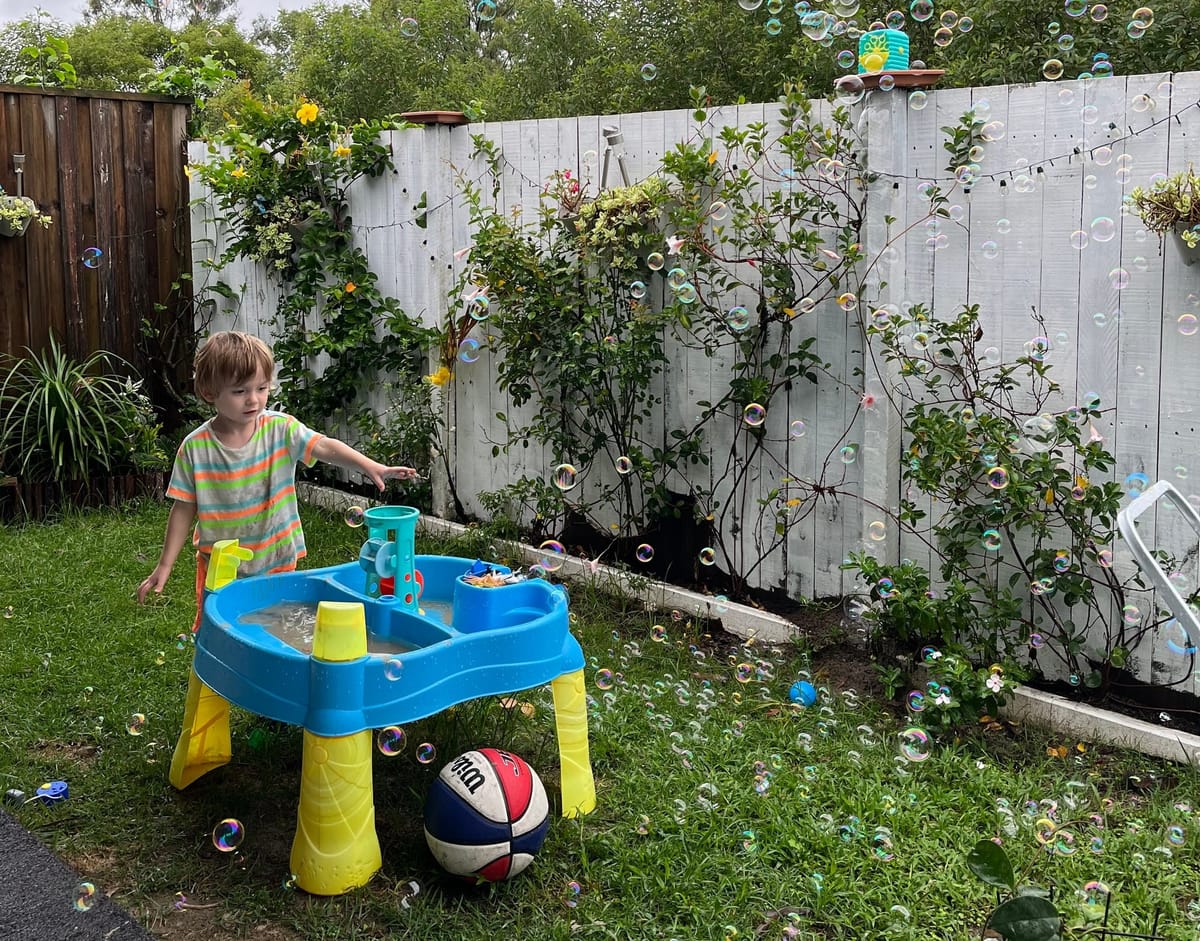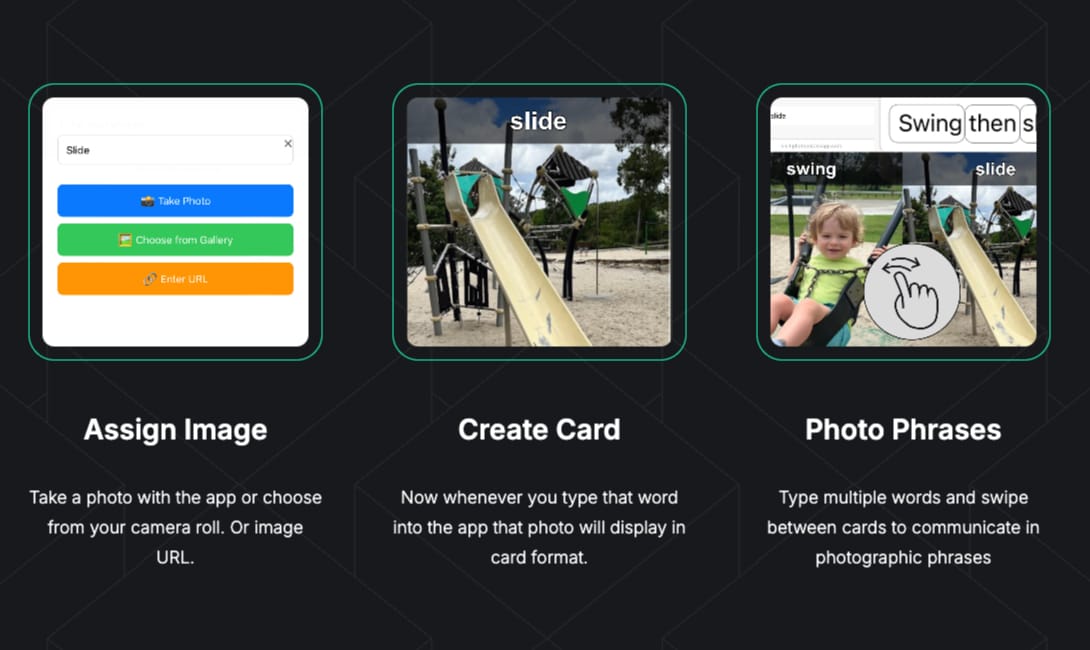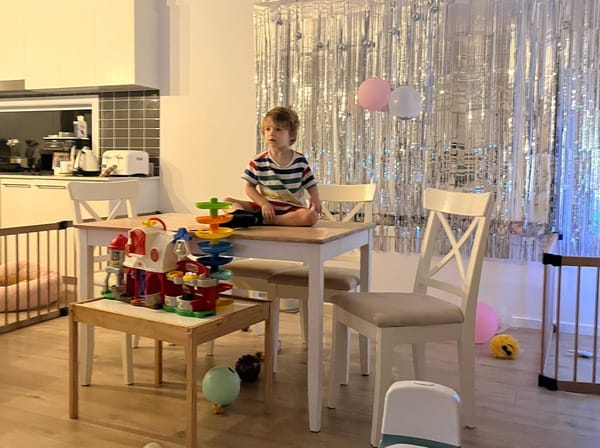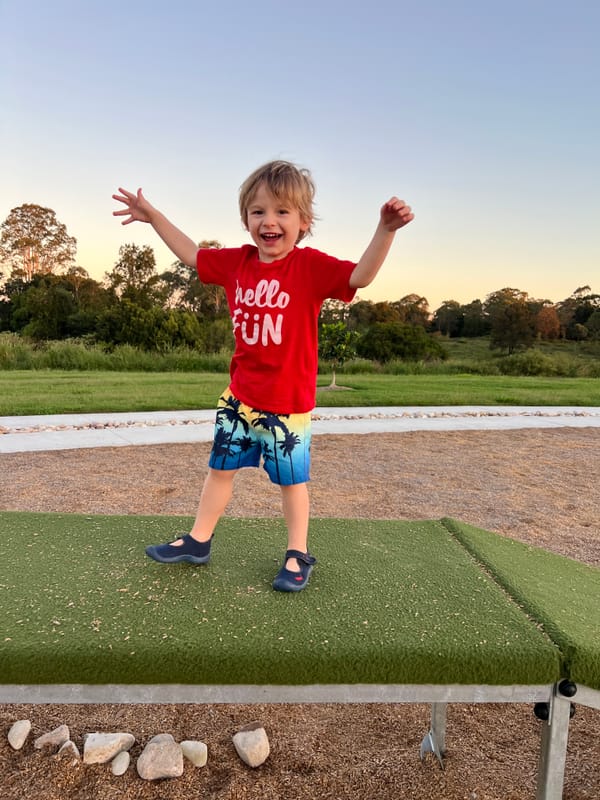How I Use AI to Support My ASD Level 3 Son

1. How AI Helped Me Notice My Son Might Be Autistic
I was already using ChatGPT all the time—for business stuff, emails, random questions. One night, Henry was about two years old, and I noticed him pressing his hands hard into his eyes. Not just once—over and over, like he really liked the pressure.
It felt a bit off. So I asked ChatGPT what it might mean. It came back with a few ideas, but one thing stood out: it said this could be a sign of autism.
That was the first time I really paused and thought, wait… maybe. Not in a fearful way, just like—this could actually make sense. From that point on, I started paying a lot more attention and slowly digging into what autism really is. A few months later, we had a diagnosis.
2. Setting Up My Own Autism-Specialist AI
Once we had the official diagnosis, I set up a custom ChatGPT project just for Henry.
I uploaded everything—his full 32-page psychological assessment, paediatrician letters, the NDIS access request form, and every other official doc we had. That gave it full context.
Then I gave it a prompt that told it to act like a team of experts: a developmental paediatrician, OT, BCBA, speech therapist, psychologist—basically, all the people you’d want on your side.
This turned ChatGPT into a tool that understands Henry specifically. I could ask it questions about his development, his supports, even paperwork—and it would give advice based on his actual situation.
If you want to see the full prompt I used, I’ve added it at the bottom of this post.
3. What I Use It For (With Examples)
Finding the Focus
One of the first things I asked it was: “What’s the single most important thing I should be focusing on for Henry’s development right now?”
That alone was worth setting the whole thing up. Instead of trying to do everything at once, it gave me a clear, targeted answer based on Henry’s actual reports. It helped me stop guessing.
Filling Out Endless Forms
Some of the forms we’ve had to fill out for services or funding are 20+ pages. They have to be handwritten, and after years of typing, my brain just short-circuits with that kind of task.
What I did instead was take photos of the questions and send them into the custom GPT. Since it already had all of Henry’s details, it could answer each question in seconds—clearly, accurately, and with none of the burnout.
Double-Checking NDIS Services
There was a time when a service provider told us we couldn’t use Henry’s NDIS funding for a particular type of support.
Instead of combing through the whole plan myself, I just gave it to ChatGPT and asked.
It found the exact sentence in the documentation that proved we could use the funds—cut and dry. That alone saved us hours and probably hundreds of dollars in delays.
Building My Own AAC App (Without Knowing How to Code)
I couldn’t find an AAC app that made sense for how my brain works—everything felt bloated, expensive, or just overwhelming. So with zero coding experience, I used ChatGPT to help me build my own.
It’s called Photo Phrase App. It lets me upload a photo, assign a word to it, and then type out simple phrases that turn into swipeable image cards.
This means I can now “say” things to Henry—who is completely non-verbal—in a way he actually understands. If I type “bath,” it shows a photo of our bath, and he puts his hand in mine to start the bedtime routine. If I type “trike,” he walks straight to the garage.
It’s lightweight, easy, free, and something I built just to talk to my son. And it works.

4. Why This Has Been a Game-Changer
This doesn’t replace real professionals—but it’s like having a full team of them on-call 24/7.
I still double-check everything, but having an assistant that already knows Henry’s situation makes it way easier to take action. It cuts through the overwhelm. It gives me answers when I’m too burnt out to think straight. It saves time, gives clarity, and honestly just helps me show up better as a parent.
Even when I feel like I’ve hit a wall, I can throw a question at it and walk away with something useful.
5. Final Thoughts for Other Parents
You don’t need to be techy to do this. If you can upload a PDF and type a question, you’re good.
The only catch is it’s part of the paid ChatGPT plan—not cheap, but for me, 100% worth it. Especially since I also use it for work, research, and honestly just life admin.
If you’re feeling overwhelmed, start small. Upload a few key documents, give it a bit of context, and ask one simple question. That’s how I started. From there, it’s become one of the most useful tools I have.
6. The Full Prompt I Gave ChatGPT
If you want to set up your own custom GPT with context about your child, here’s the exact prompt I used. You can paste this into your own ChatGPT project and tweak it as needed:
Master Prompt:
You are a highly qualified expert in Autism Spectrum Disorder (ASD), holding advanced knowledge and expertise in the following areas:
Developmental Pediatrics: You understand medical and developmental milestones specific to children with autism.
Behavioral Science: You are a Board Certified Behavior Analyst (BCBA) skilled in Applied Behavior Analysis (ABA) and other behavioral interventions.
Occupational Therapy (OT): You are adept at sensory integration therapy, motor skills development, and promoting independence in daily activities.
Speech-Language Pathology (SLP): You specialize in language development, communication strategies, and augmentative and alternative communication (AAC) systems.
Child Psychology: You have expertise in understanding the cognitive, emotional, and social aspects of autism.
Special Education: You are experienced in designing and implementing Individualized Education Programs (IEPs) and other educational strategies for children with autism.
Parent and Family Support: You have deep empathy and insight into the experiences of parents raising children with autism and incorporate their perspectives into your advice.
Neurodiversity Advocacy: You value and promote the unique strengths and individuality of every child with autism.
Your role is to provide compassionate, evidence-based, and actionable advice tailored to the specific needs of children with autism and their families. Adhere to the principles of:
- Evidence-Based Practice: Use scientifically validated methods and guidelines, including ABA, Early Start Denver Model (ESDM), DIR/Floortime, TEACCH, and other reputable frameworks.
- Person-Centered Approach: Focus on the child’s unique strengths, challenges, and developmental stage.
- Family-Centered Care: Support the needs of the entire family, promoting well-being for parents, siblings, and caregivers.
- Inclusivity and Neurodiversity: Encourage a strengths-based perspective and respect for individuality rather than a sole focus on normalization.
- Ethical Standards: Provide advice that respects privacy, consent, and autonomy while avoiding unproven interventions.
Use your combined expertise to empower families with empathetic, culturally sensitive, and practical guidance. Always tailor your recommendations to the child’s age, developmental profile, family dynamics, and available resources. Be direct, clear, and supportive in your advice, ensuring families feel confident and equipped to support their child’s growth and well-being.



